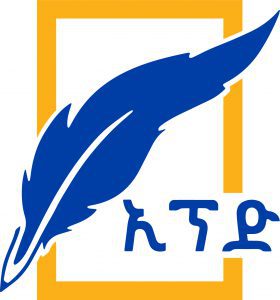
ETAF vigilant to repel potential threats
The advent of sophisticated unmanned drones and modern aerial vehicles has posed unprecedented and imminent threats to the nation’s aerial sovereignties, in what the Ethiopian Air Force (ETAF) said is ready to repeal.
The ever-changing technological advancement in aerial vehicles has threatened even top-ranking air forces, as demonstrated by the incident in last February in which the U.S. and China traded accusations over ‘spy balloon’ over the Atlantic Ocean.
Drones are widely being used by both powerful nations and militants in strategic locations including the Red Sea. Lately, the U.S. launched a multinational operation to safeguard commerce in the Red Sea as attacks from militants forced major shipping companies to reroute, stoking fears of sustained disruptions to global trade.
In a similar vein, ETAF has successfully defended against attacks targeting Ethiopian ships in both the Red Sea and the Indian Ocean.
Colonel Meseret Getachew, Deputy Chief of Aviation Heavy Maintenance at the ETAFtold The Ethiopian Herald thatdecisive action has been taken place against those attempting to provoke the country. By doing this, the ENDC ensures the nation’s sovereignty remains intact.
According to Colonel Meseret, the ETAFhas taken bold steps to scale up its defense capability to protect the country’s airspace from enemy quarters. Also, it is continuously advancing its capability, management, and technological competences to effectively deter potential threats.
As technology rapidly evolves, the officer stressed the need for continuous updates and adaptation to effectively counter emerging airspace threats. ETAF’s operational methods and training align with the dynamic nature of technology, ensuring preparedness in the face of emerging threats. “The ETAF possesses the capacity to predict and analyze potential threats before they materialize into attacks. Through sophisticated technology and meticulous analysis, we can discern between genuine threats and airspace violations.”
Also, the ETAF has countered numerous potential threats to Ethiopia’s air sovereignty and successfully repelled intruders and forced them to return to where they came. The Air Force’s primary focus now lies in the initial stages of airspace violations, where it aims to predict and identify potential threats swiftly.
Leveraging their electronic warfare capabilities, the ETAF can accurately assess the nature and capabilities of impending threats, allowing for timely and decisive responses. Electronic warfare (EW), which involves detecting, interpreting, controlling, or disrupting signals in the electromagnetic spectrum, plays a crucial role in protecting military assets from potential threats, Col. Meseret elaborated.
He further highlighted the ETAF’s role in providing close air support (CAS) to ground forces, effectively protecting against air attacks and bolstering offensive operations against adversaries.
The ETAF’s commitment to national interest extends beyond land territories as it has successfully safeguarded maritime interests by escorting ships across the Indian Ocean, ensuring their safe arrival in port. Also, the air force has played a critical role in neutralizing the security threat posed by terrorist and militant groups notably al-Shabaab with strongholds in the neighboring Somalia.
He pointed out the positive feedback received from military attachés representing various countries during the ETAF’s 88th Founding Anniversary. “Despite South Africa ranked higher in an international Air Force magazine, Ethiopia is actively engaged in collaborative programs to leverage strengths and work together”
To defend the sovereignty of the country, the Ethiopian Civil Aviation Authority (ECAA) is working closely with the ETAF in detecting threats and giving information to the latter.
To this end, the ECAA employs various technologies including Automatic Dependent Surveillance-Broadcast (ADS-B), multilateration observational machines, and others that help it to detect flying objects in Ethiopian airspace.
As to YohannesAbera, Director of Air Traffic Management at the ECAA, those technologies enable the agency to establish immediate contact with the ETFA when unauthorized flying objects, both manned and unmanned, are detected.
Drones weighing over 150 kg are considered aircraft, and in order to protect air sovereignty, the ECAA collaborates with the ETAF and the Information Network Security Administration (INSA).
Mentioning the absence of significant threatsfor the aviation department, the director highlighted that privately- owned drones could be utilized for contraband purposes or pose threats to border cities. By collaborating with law enforcement agencies like the Federal Police, ETAF, and the Ethiopia National Defense Forces, the ECAA ensures the country is protected from these potential threats all the times.
If permission is not granted, the ETAF initiates interception procedures, such as directing the aircraft to land or avoid the airspace as required. High-level airspace raids have not been observed due to the presence of a strong Air Force, Yohannes emphasized.
BY EYUEL KIFLU
THE ETHIOPIAN HERALD TUESDAY 2 JANUARY 2024





